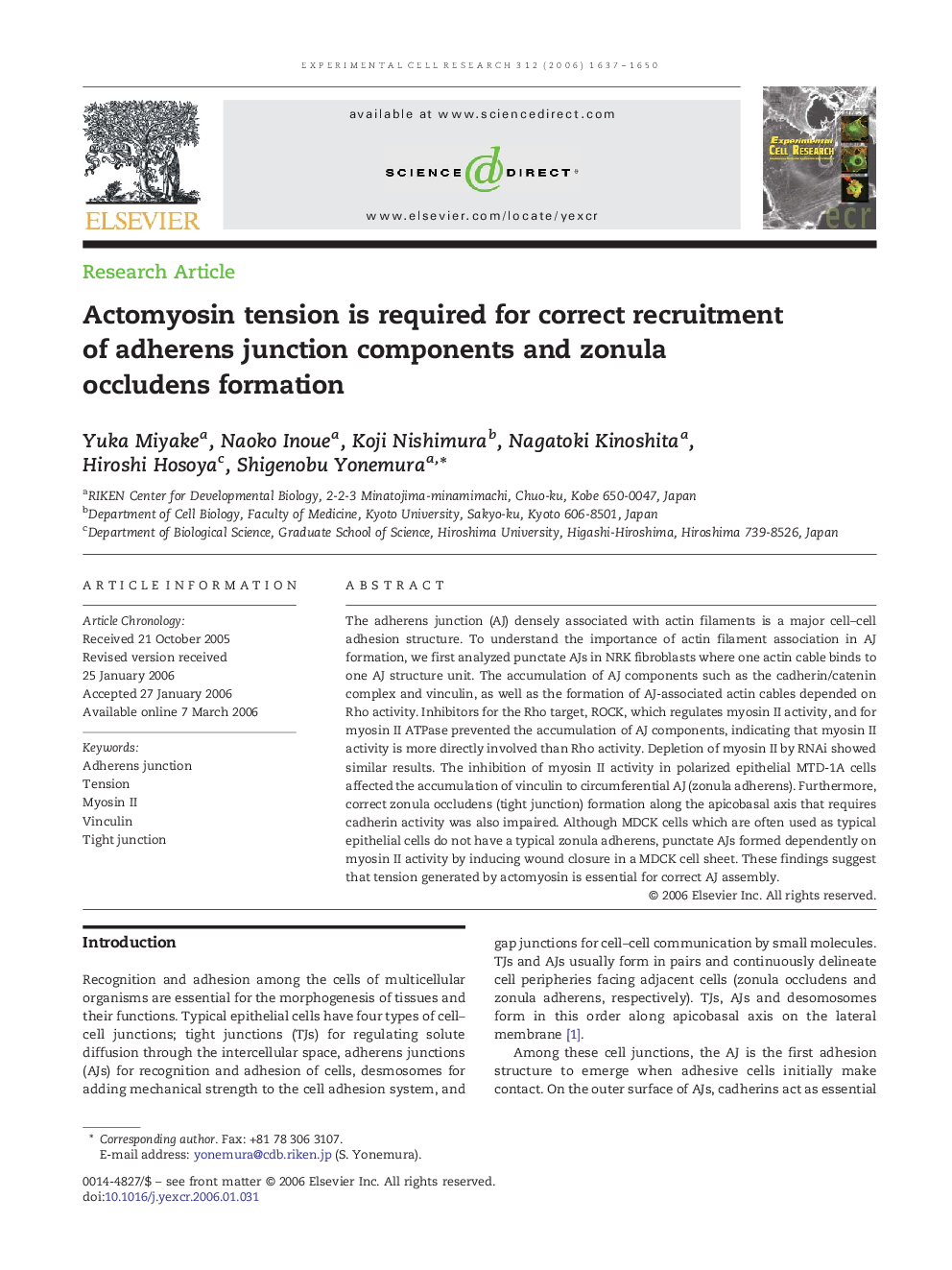| Article ID | Journal | Published Year | Pages | File Type |
|---|---|---|---|---|
| 2132933 | Experimental Cell Research | 2006 | 14 Pages |
Abstract
The adherens junction (AJ) densely associated with actin filaments is a major cell-cell adhesion structure. To understand the importance of actin filament association in AJ formation, we first analyzed punctate AJs in NRK fibroblasts where one actin cable binds to one AJ structure unit. The accumulation of AJ components such as the cadherin/catenin complex and vinculin, as well as the formation of AJ-associated actin cables depended on Rho activity. Inhibitors for the Rho target, ROCK, which regulates myosin II activity, and for myosin II ATPase prevented the accumulation of AJ components, indicating that myosin II activity is more directly involved than Rho activity. Depletion of myosin II by RNAi showed similar results. The inhibition of myosin II activity in polarized epithelial MTD-1A cells affected the accumulation of vinculin to circumferential AJ (zonula adherens). Furthermore, correct zonula occludens (tight junction) formation along the apicobasal axis that requires cadherin activity was also impaired. Although MDCK cells which are often used as typical epithelial cells do not have a typical zonula adherens, punctate AJs formed dependently on myosin II activity by inducing wound closure in a MDCK cell sheet. These findings suggest that tension generated by actomyosin is essential for correct AJ assembly.
Related Topics
Life Sciences
Biochemistry, Genetics and Molecular Biology
Cancer Research
Authors
Yuka Miyake, Naoko Inoue, Koji Nishimura, Nagatoki Kinoshita, Hiroshi Hosoya, Shigenobu Yonemura,
